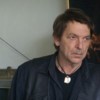


Let us know if you would like to see more photos of this artwork!
- Back of the work / Side of the work
- Details / Signature / Artwork's surface or texture
- Artwork in situation, Other...
CANI (2017) Drawing by Costantino Di Renzo
More info
- Packaging (Tube) All artworks are shipped with a premium carrier, carefully protected and insured.
- Tracking Order tracking until the parcel is delivered to the buyer. A tracking number will be provided so that you can follow the parcel in real-time.
- Delay Most packages are delivered worldwide within 1 to 3 weeks (Estimate)
- Customs not included The price does not include customs fees. Most countries have no import tax for original artworks, but you may have to pay the reduced VAT. Customs fees (if any) are to be calculated on arrival by the customs office and will be billed separately by the carrier.
More info
- Trackable Online Certificate of Authenticity Authenticity Certificates can be verified online at any moment by scanning the artwork code.
- Artist Value Certification Experts study the work and career of an artist then establish an independent and reliable average price value. The average price value situates the artist on a price range for a given period. The experts may also be asked to establish a more precise estimate for a particular work.
More info
100% secure payment with SSL certificate + 3D Secure.
More info
-
Original Artwork (One Of A Kind)
Drawing,
Acrylic
/
Graphite
/
Conté
on Cardboard
- Dimensions Height 13in, Width 35in
- Framing This artwork is not framed
- Categories Drawings under $5,000
Costantino Di Renzo is a contemporary Italian artist. He embarked on his artistic journey in 1965 when he enrolled at the Academy of Fine Arts in Rome. Early in his career, he delved into an intricate exploration of past art, particularly drawing inspiration from the Dutch painter Vermeer. This marked the beginning of a conceptual analysis of images in his work. In 1974, he joined the hyperrealist movement, and his works made their debut at the Margutta gallery in Pescara (1976) and the Il Modulo gallery in Salerno (1977). Seeking to refine his hyperrealist technique, he ventured to the United States in 1978, where he honed his skills under the guidance of artists like Richard Estes, Don Eddy, and Chuk Close. This period also marked his interaction with the Borghi gallery in New York, where he held an exhibition titled "New York, sphinx of cement, aluminum, and mirrors" in 1979.
Critical acclaim followed as prominent art critics, including Duilio Morosini, Marcello Venturoli, and Giuseppe Marchiori, recognized the depth of his painting. In 1975 and 1979, he participated in the XXIX and XXXIII "FP Michetti Prize."
Shifting gears in 1980, Costantino turned his artistic talents towards sculpture, unveiling his creations in 1982 at the Cesare Manzo gallery in Pescara and the Centro sei gallery in Bari. His sculptures, veiled figures crafted from fiberglass, transformed exhibition spaces into immersive installations. In the same year, he showcased his monumental sculptures at the Bari International Fair, an invitation earned through his talent.
In the early 1980s, Costantino also ventured into theatrical scenography, collaborating with various theater companies. This included working on productions such as Shakespeare's “A Midsummer Night's Dream,” "Lazzarina tra i coltelli" by Rosso di San Secondo, "La Moscheta" by Ruzante, and more. In 1985, he returned to painting, creating a captivating series of works during a year-long stay in Sydney, Australia, where he drew inspiration from the natural beauty of the country. These works were followed by a series of paintings dedicated to the moon, exhibited in Rome in 1989.
In 1992, an important exhibition in Japan marked his international recognition, featuring 36 large-format works. Despite market success, Costantino made a deliberate move away from Rome in 1992. He settled in the countryside near his hometown, undertaking a deep study of Homeric Ulysses. His series of works examined Ulysses' departure from his island, creating a unique symbiosis between painting and literature.
In 2002, he exhibited works from the preceding decade in Miami's "Rolnick House." In 2003, his painting style evolved, breaking into irregular geometries enriched with plastic elements that continued the narrative beyond the canvas's surface. He further diversified his creative portfolio by authoring short stories in 2005 and producing videos in 2008.
Costantino's artistic evolution took another turn in 2009 when he exhibited forty large-format works in Lecce, marking the end of his mythological period. His art transformed, embracing contemporary themes and delving into the complexities of the human psyche. This new phase explored topics like human frailty, madness, and societal weaknesses, often presented with profound irony. His later works were displayed in Milan's Unigallery under the exhibition "Pratica-Mente," accompanied by a video titled "Practice-Mind-None." This marked a significant shift in his artistic trajectory, showcasing his ability to adapt and explore diverse facets of the human experience through his art.
-
Nationality:
ITALY

- Date of birth : 1946
- Artistic domains:
- Groups: Contemporary Italian Artists







